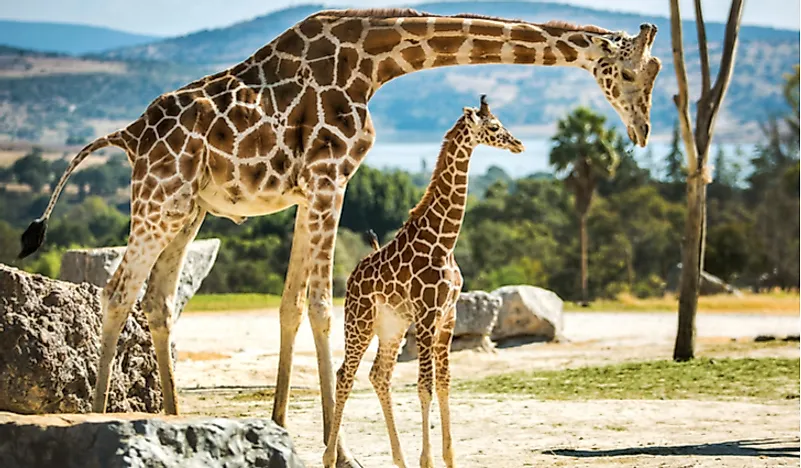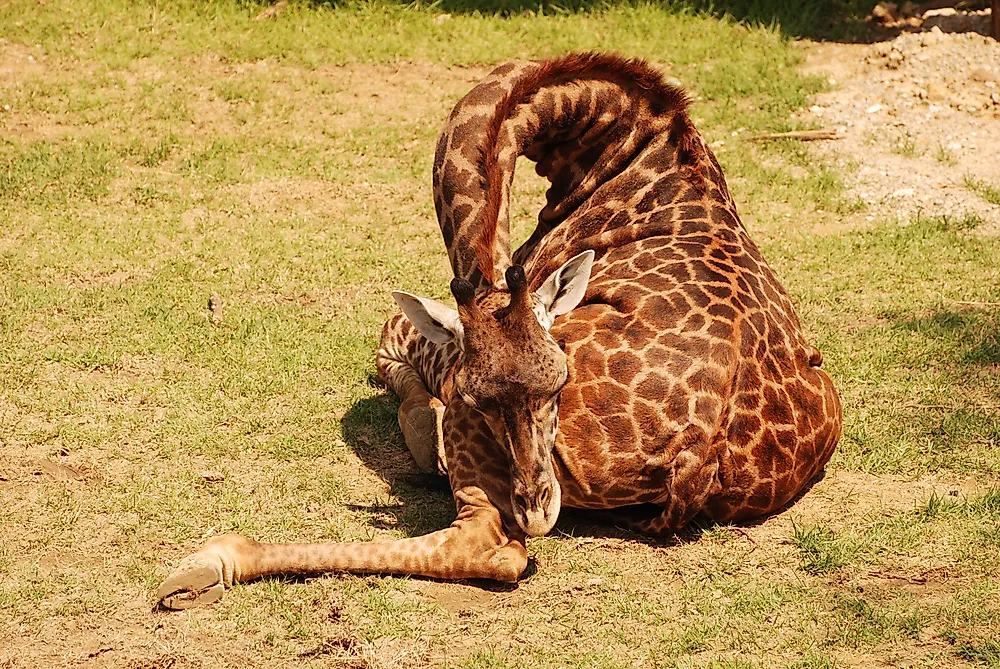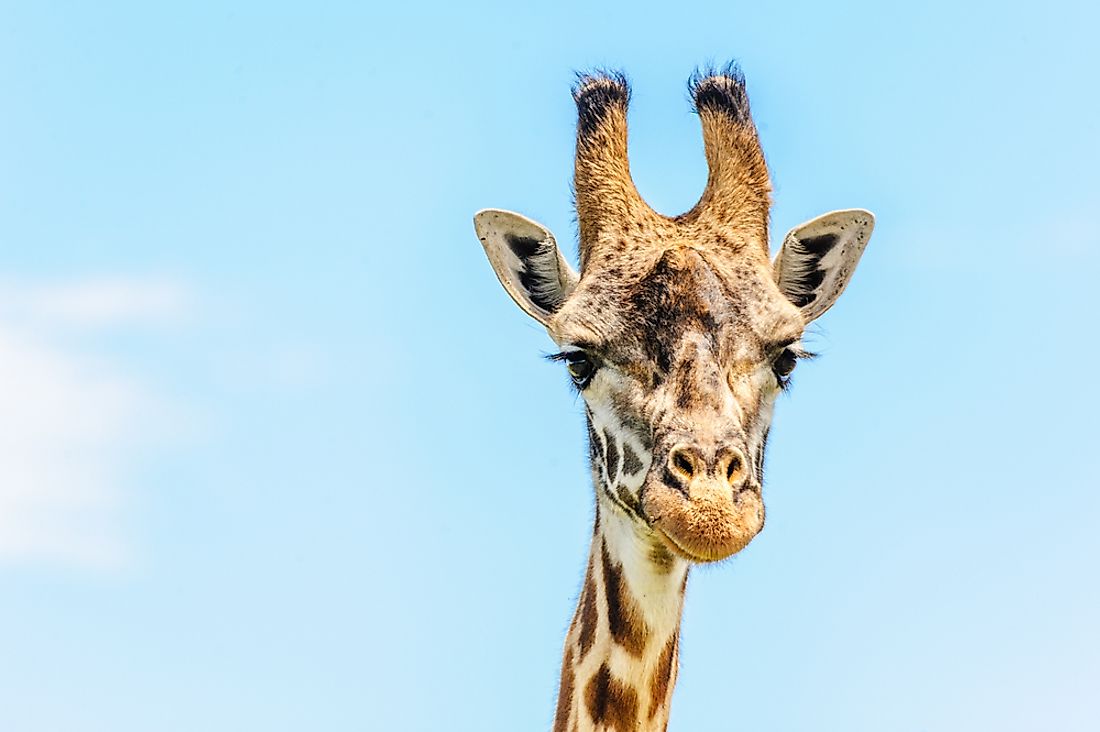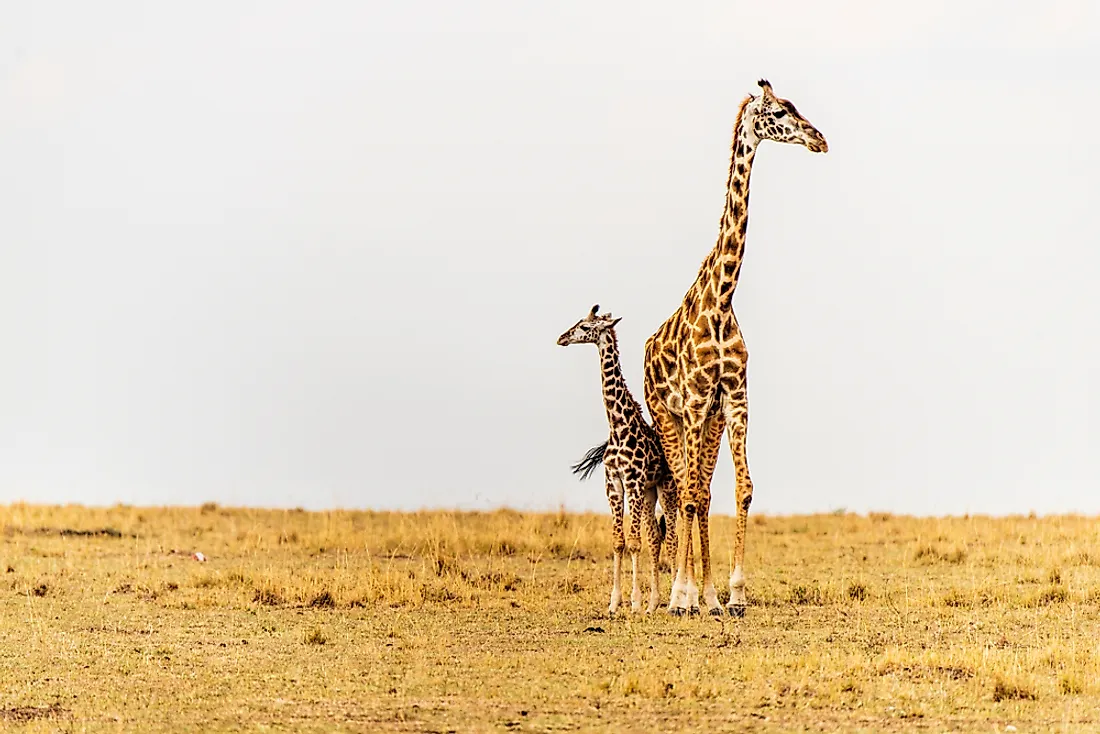10 Fun Facts About Giraffes

Uniquely patterned gentle giants, giraffes are the tallest animals in the world. Giraffes can be found across the African Savannah where they primarily feast on the leaves of Acacia trees. They are an endangered species. Here are some interesting facts about giraffes!
10. Are There Different Types of Giraffes?
Currently, the International Union for the Conservation of Nature has given recognition to only one species of giraffes. Some independent studies have recognized six sub-species: West African, Masai, Angolan, South African, the Rothschilds, and the reticulated giraffe. The giraffe is classified under the family Giraffidae while the only species recognized is the Giraffa Camelopardalis.
9. Do Giraffes Sleep? Do Giraffes Sleep Standing Up?

The unusual activity of sleeping while standing has been observed among older giraffe. Giraffes sleep for four to six hours every day, mostly at night. To lie down, the giraffe must kneel its front legs before lowering the rest of its body down gently.
8. Do Giraffes Lay Down?
Contrary to popular belief, giraffes can lay down by resting their body on top of their legs. The front legs fold during kneeling and its hind legs bend and rests on top of its legs. While on this position, its neck can bend so that it can rest on the hip or thigh. However, giraffes do not lay down for long periods of time due to the threat posed by predators like lions, wild dogs, leopards, and hyenas.
7. Do Giraffes Make Noise?
Giraffes can make noise! In case of an attack by a predator, giraffes are able to raise an alarm by grunting and moaning. During the mating season, male giraffes create loud cough sounds to make their presence felt among the female giraffes. Female giraffes also watch over their calves by making bellowing sounds. In addition, giraffes hum to fellow giraffes in the herd.
6. Do Giraffes Have Horns?

Giraffes have horn-like protrusions called ossicones. Ossicones are found on their skulls and are made of cartilage and covered by skin. The ossicones are fused to the skull at the parietal bones. The horns come in handy when fighting an intruder, such as a giraffe from another herd or a competing male during the mating season. In adult giraffes, the ossicones become knobs and bald, especially in males. Female giraffes tend to have ossicones that are thin and covered in hair.
5. Do Giraffes Have Teeth? Do Giraffes Chew Cud?
Giraffes have teeth! The giraffe's skull has an upper and lower jaw filled with teeth and molars that facilitate the grinding of food. However, giraffes do not have front teeth. As the animal lives in the savannah and woodlands, leaves from trees and fruits are its main sources of food. During the wet seasons, food is more plenty than in the dry season. However, giraffes have a rough tongue, lips, and palate that are adapted to the task.
4. Do Giraffes Lay Eggs?
Giraffes do not lay eggs. Reproduction takes place during the mating season where a male giraffe courts the female giraffe in synchronized moves. Giraffes give birth to live young after a gestation period of 15 months.
3. Do Giraffes Give Birth Standing Up?

A female giraffe will give birth while standing up. The calf’s front legs emerge before the rest of the body follows through. In the process, the umbilical cord breaks. The calf falls to the ground and the mother cleans the calf by licking it.
2. Do Giraffes Mate For Life? Are Giraffes Monogamous?
Male giraffes are polygamous when it comes to mating. Since giraffes move in herds, the male giraffes will scout for potential mating partners by tasting the urine of the younger female giraffes to determine the presence of oestrus. Upon its detection during this process, the males will battle among themselves to get the mating partner.
1. Are Giraffes Endangered?
Wildlife conservation groups around the world have determined that the giraffe is facing an imminent threat of extinction. African communities have in the past fed on giraffe meat while using its tail hairs to make flywhisks and its skin was used in the manufacture of drums, sandals, and shields. During the colonial and post-colonial period, European tourists hunted the giraffe for sport. Environmental degradation has made the situation worse thanks to droughts and human encroachment destroying the giraffe’s habitat. With these factors, anti-poaching laws have been legislated and have seen game parks and reserves being established to protect the giraffe and other endangered animals.











